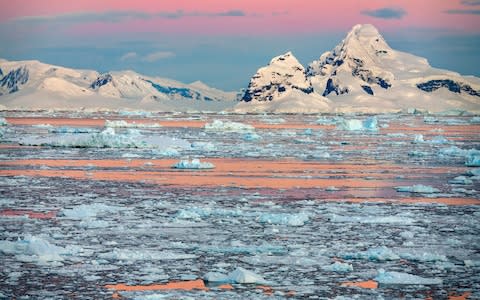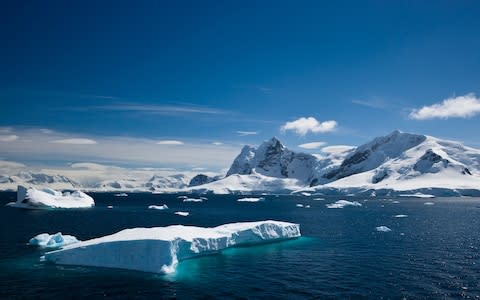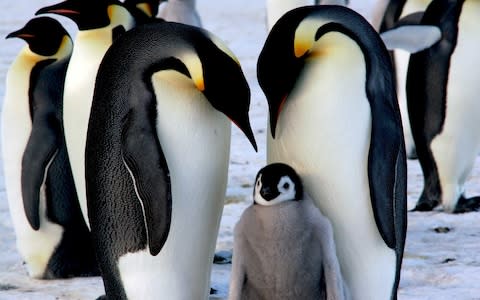Amazing books about Antarctica

Antarctic literature is a genre unto itself. The extremity of latitude, the dangers of the Southern Ocean, the fame (or notoriety) of the heroes of the Edwardian era, and the sheer, surreal beauty of the ice have dazzled sailors, explorers, writers and cruise passengers for two centuries. Rolling seas aside, a voyage to the ice continent affords more time than on most cruises for reading and research. Here are ten great books, covering fact and fantasy, nature and ecology.
Scott of the Antarctic: The Definitive Biography (2005) by David Crane
Heroic amateur, classic Brit blunderer, misled maverick? The story of Scott’s Antarctic ambitions and tragic end have been seared into the national consciousness by mythopoeic accounts of the 1910-12 Terra Nova expedition. David Crane’s magisterial work leads us back to the hard facts of this and the 1901-04 Discovery expedition, and trawls through diaries and interviews to present a complete portrait of Robert Falcon Scott and reassess his often overlooked contributions to scientific endeavour.
The Birthday Boys (1991) by Beryl Bainbridge
This short novel weaves fact and fiction and brings the Terra Nova story to life through the voices of the five ill-fated main players: Taff Evans, Dr Wilson, Birdie Bowers, Titus Oates and Scott himself. Bainbridge brings humanity and fragility to the story, highlighting rivalries as well as the camaraderie. When pundits talk about Mars missions they often dwell on the human experiment element; the expedition led by Scott was, for its time, very much a test of a species in utterly unsuitable – as well as uncharted – territory.

The Worst Journey in the World (1922) by Apsley Cherry-Garrard
Widely regarded as the most eloquent of the first-hand writers, “Cherry” – the youngest member of Scott’s team – was one of the three men who undertook the notorious 1911 “Winter Journey”, a 36-day, 120-mile round-trip in near darkness and temperatures that ranged from −40.0 to −60.8 °C, from Hut Point (their base) to Cape Crozier on the Ross Sea to collect emperor penguin eggs. Rich in detail and drama, it’s a classic of Antarctic literature.
South (1919) by Ernest Shackleton
Irish-born Shackleton was third officer on Scott’s Discovery expedition and led the 1907-09 Nimrod Expedition and 1914-17 Imperial Trans-Antarctic expedition. During the latter, the ship Endurance became trapped in ice in the Weddell Sea. Shackleton led 27 exhausted men across the ice floes to Elephant Island, from where he and five other men set off in an open lifeboat, the James Caird, on an 800-mile, 16-day voyage to South Georgia. South is the story of their ordeal and eventual rescue, penned in a prose that embodies the measured, manly reserve demanded of leaders and a certain class of men at the time.
The South Pole: An Account of the Norwegian Antarctic Expedition in the Fram, 1910-1912 (1913) by Roald Amundsen
Subtitled “Or How To Be a Winner”. Well, it’s not, but there is something in Amundsen’s self-deprecating style and meticulous attention to detail that explains not only his triumphant march to the pole but all his other achievements, at both ends of the earth. Whether writing about the tried and tested technology of his sleds, skis, clothing and food, or the use – cruel at times – of dogs, he is brutally matter of fact. While not a natural storyteller, Amundsen’s narrative is a healthy corrective to the sometimes jingoistic retelling of the Scott/Shackleton legends.

Terra Incognita (1996) by Sara Wheeler
Embedded in the history of Antarctic exploration are tropes about class and privilege, colonial possession and scientific prowess. Sara Wheeler’s book, written while spending seven months living and working on the white continent as part of a sponsored scheme to open up the field of polar “discovery” to artists and writers, is full of keen insights on these subjects, as well as frank comments about those who occupy the various full-time research bases. More personal and confiding than many travel writers, Wheeler makes for a warm companion in a testing environment.
Skating to Antarctica (1997) by Jenny Diski
A true original, Diski discovers on a cruise to Antarctica not only the grandiose ice-scapes and crystalline skies that make visitors swoon, but a whiteness that takes her back to an unhappy childhood and time spent in a psychiatric hospital. As much about the inner life as the outer vision, Skating… finds the author most at ease in her cabin – well away from her fellow passengers and the schedule of lectures, excursions and mealtimes.
End of the Earth: Voyages to Antarctica (2003) by Peter Matthiessen
Nostalgia ripples through this contemporary account of Antarctica, as if Matthiesen – observing the continent from the lofty deck of a big modern icebreaker – feels he has somehow missed out on the heroism of past times. His prose is ice-crisp, and subjects not found in derring-do adventure stories are well covered, including the political and commercial history of the region, and the environmental risks that Antarctica now faces – though Matthiessen rather overlooks the fact that he too is partaking in carbon-unfriendly luxury tourism.

Antarctic Wildlife (2011) by James Lowen
A comprehensive guide to the birds and marine mammals of the Antarctic Peninsula, Drake Passage and Beagle Channel. As well as texts on seasonal wildlife, tourism and cruising, this field guide has full-colour photographs and information for identifying penguins, whales, seals, seabirds, and other fauna, as well as the flora of the peninsula and islands.
Antarctica: A Guide To The Wildlife (1994) by Tony Soper
Excellent illustrations by Dafila Scott (Robert Falcon Scott’s granddaughter and a trained zoologist) and a plain, pithy text by well-known naturalist and broadcaster Soper make this an excellent introduction to Antarctic species’ breeding and feeding habits and the best locations to observe them. If you’re visiting with younger members of the family, this is perhaps the most accessible field guide.
Heading south…
Your Antarctic cruise will probably begin at Ushuaia, Argentina or Punta Arenas, Chile. To get in the mood, read Charles Darwin’s Voyage of the Beagle (1839), in which the young would-be scientist – and sufferer of terrible seasickness – reports on austral climate patterns, wildlife, flora, rock morphology and political history of the austral latitudes of South America. Harry Thompson’s The Thing of Darkness (2005) fictionalises the Darwin-FitzRoy story with aplomb.
